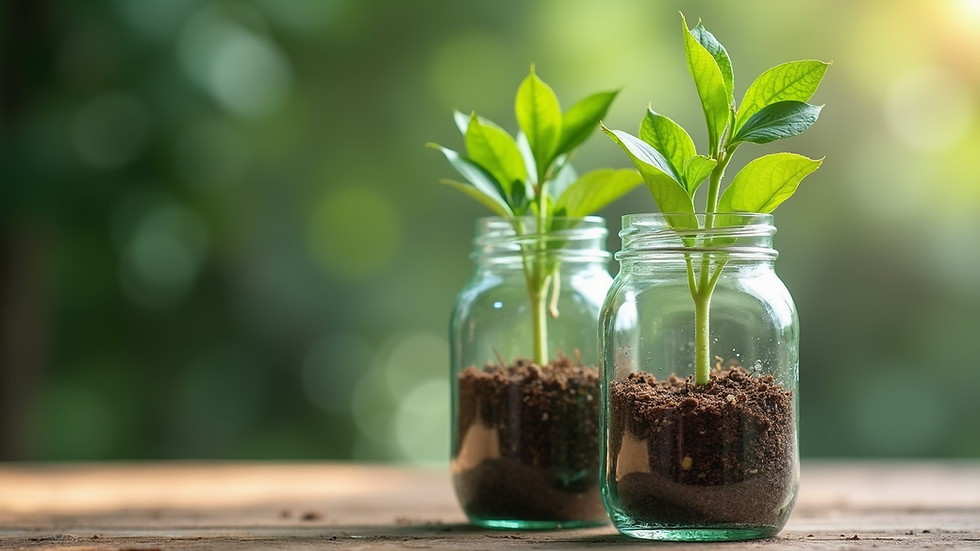Mastering Indoor Plant Care: Tips and Tricks
- JoAnne Blaskiewicz
- Oct 13
- 4 min read
Bringing plants into our homes is like inviting a little piece of nature to brighten our days. I’ve found that with a bit of love and the right know-how, even the most novice plant parent can enjoy lush, thriving greenery. Whether you’re just starting your indoor garden or looking to improve your skills, I’m excited to share some practical houseplant care tips that have made a real difference for me. Let’s dive in and make your plants flourish!
Essential Houseplant Care Tips to Keep Your Green Friends Happy
Taking care of houseplants can feel a bit intimidating at first, but it’s really about tuning into their needs and creating a nurturing environment. Here are some of my favorite tips that help keep plants healthy and vibrant:
Choose the right spot: Most houseplants love bright, indirect light. Placing them near a north or east-facing window usually works well. Avoid harsh direct sunlight that can scorch leaves.
Water wisely: Overwatering is a common mistake. I like to check the soil moisture by sticking my finger about an inch deep. If it feels dry, it’s time to water. Remember, different plants have different water needs, so it’s good to research your specific varieties.
Humidity matters: Many indoor plants thrive in humid environments. If your home is dry, especially in winter, try misting your plants or placing a humidifier nearby.
Feed your plants: During the growing season (spring and summer), I feed my plants with a balanced, water-soluble fertilizer every 4-6 weeks. This gives them the nutrients they need to grow strong.
Keep an eye out for pests: It’s easy to spot common pests like spider mites or aphids if you regularly inspect your plants. Early detection means easier treatment!

What are the 5 Basic Needs of a Plant?
Understanding the fundamental needs of plants helps us care for them better. Here are the five essentials every plant requires to thrive indoors:
Light: Plants need light for photosynthesis, which fuels their growth. The amount and type of light vary by species, so matching your plant to the right light condition is key.
Water: Water supports nutrient transport and keeps cells turgid. Too much or too little water can stress plants, so balance is crucial.
Nutrients: Plants absorb minerals and nutrients from the soil. Using quality potting mix and occasional fertilizing ensures they get what they need.
Air: Good air circulation helps prevent mold and pests. It also supplies carbon dioxide, which plants use during photosynthesis.
Temperature: Most houseplants prefer stable temperatures between 65-75°F (18-24°C). Avoid placing plants near drafts or heating vents.
By keeping these needs in mind, you can create a comfortable home for your plants to flourish.
Creating the Perfect Environment for Your Indoor Plants
One of the joys of indoor gardening is customizing your space to suit your plants’ needs. Here are some ways I’ve found to create an ideal environment:
Use quality soil: A well-draining potting mix is essential. I often add perlite or orchid bark to improve aeration and drainage.
Choose the right pots: Pots with drainage holes prevent water from pooling at the bottom, which can cause root rot. I like using ceramic or terracotta pots because they breathe well.
Rotate your plants: Turning your plants every week helps them grow evenly and prevents them from leaning toward the light.
Group plants together: This creates a micro-habitat with higher humidity, which many tropical plants love.
Control pests naturally: I prefer using neem oil or insecticidal soap instead of harsh chemicals to keep my plants safe and healthy.

Troubleshooting Common Indoor Plant Problems
Even with the best care, plants can sometimes struggle. Here’s how I tackle some common issues:
Yellowing leaves: This often means overwatering or poor drainage. I check the soil and adjust watering habits accordingly.
Brown leaf tips: Dry air or inconsistent watering can cause this. Increasing humidity and watering evenly usually helps.
Leggy growth: If your plant is stretching toward the light, it needs more brightness. Moving it closer to a window or supplementing with grow lights can fix this.
Pests: Sticky residue or tiny webs are signs of pests. I isolate the plant and treat it promptly with natural remedies.
Wilting: This can be due to underwatering or root problems. I inspect the roots and soil moisture to diagnose the issue.
Remember, patience is key! Plants often bounce back with a little extra care.
Bringing Nature Indoors with Confidence and Joy
Caring for houseplants is a rewarding journey that connects us with nature in our own homes. I’ve learned that every plant has its personality and needs, and tuning into those makes all the difference. If you’re looking for a trusted source to find beautiful, organically grown houseplants, I highly recommend checking out Leafy Loft. Their carefully nurtured propagations bring joy and greenery to any space.
With these houseplant care tips, I hope you feel inspired to nurture your indoor garden with confidence. Remember, every leaf you care for is a little victory, and your green friends will thank you with their vibrant presence!




Comments